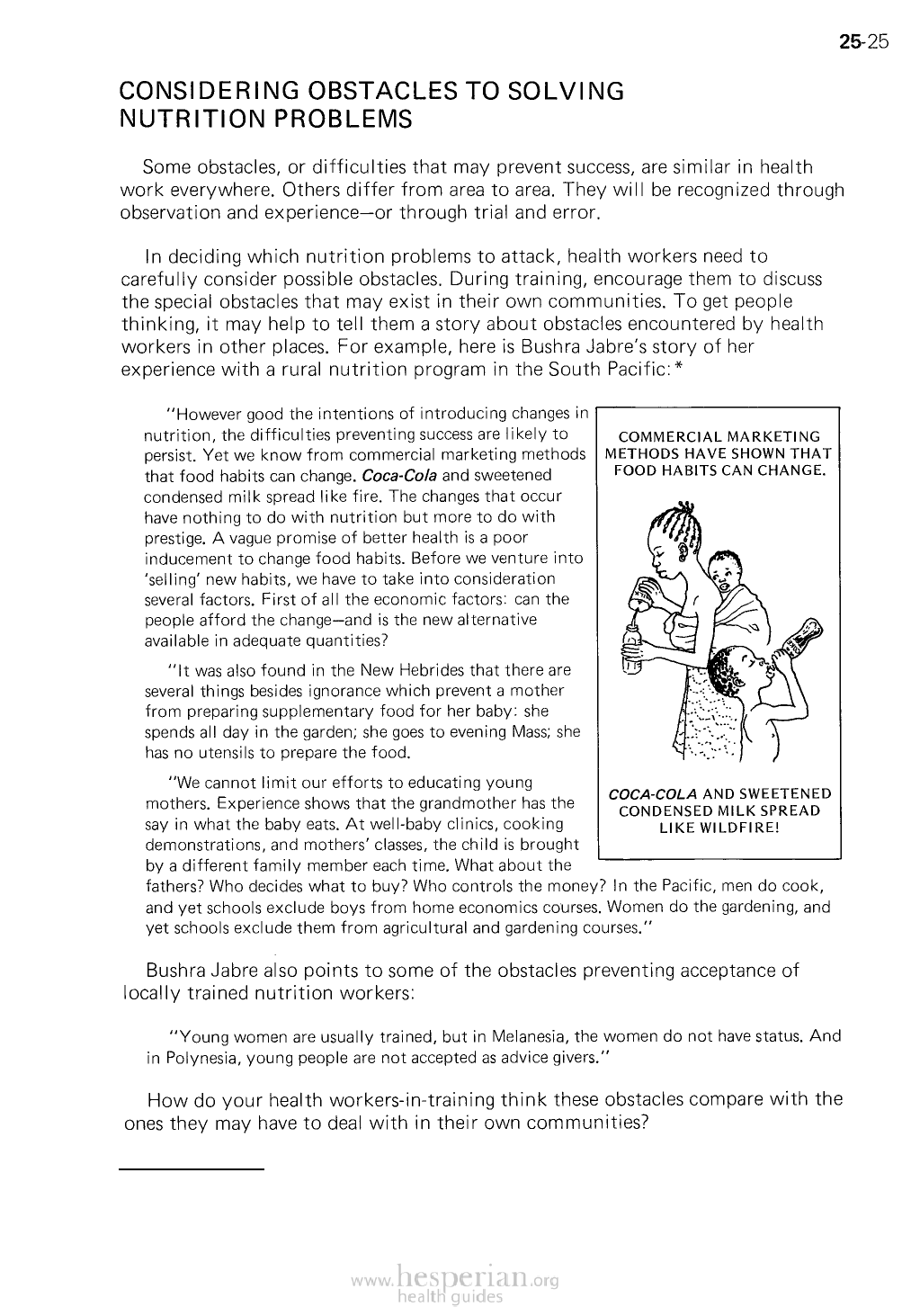
CONSIDERING OBSTACLES TO SOLVING
NUTRITION PROBLEMS
25-25
Some obstacles, or difficulties that may prevent success, are similar in health
work everywhere. Others differ from area to area. They will be recognized through
observation and experience—or through trial and error.
In deciding which nutrition problems to attack, health workers need to carefully
consider possible obstacles. During training, encourage them to discuss the special
obstacles that may exist in their own communities. To get people thinking, it may
help to tell them a story about obstacles encountered by health workers in other
places. For example, here is Bushra Jabre’s story of her experience with a rural
nutrition program in the South Pacific:*
“However good the intentions of introducing changes
in nutrition, the difficulties preventing success are likely
to persist. Yet we know from commercial marketing
methods that food habits can change. Coca-Cola and
sweetened condensed milk spread like fire. The changes
that occur have nothing to do with nutrition but more to
do with prestige. A vague promise of better health is a poor
inducement to change food habits. Before we venture into
‘selling’ new habits, we have to take into consideration
several factors. First of all the economic factors: can the
people afford the change—and is the new alternative
available inadequate quantities?
COMMERCIAL MARKETING
METHODS HAVE SHOWN THAT
FOOD HABITS CAN CHANGE.
“It was also found in the New Hebrides that there are
several things besides ignorance which prevent a mother
from preparing supplementary food for her baby: she
spends all day in the garden; she goes to evening Mass; she
has no utensils to prepare the food.
“We cannot limit our efforts to educating young
mothers. Experience shows that the grandmother has the
say in what the baby eats. At well-baby clinics, cooking
COCA-COLA AND SWEETENED
CONDENSED MILK SPREAD
LIKE WILDFIRE!
demonstrations, and mothers’ classes, the child is
brought by a different family member each time. What
about the fathers? Who decides what to buy? Who controls the money? In the Pacific, men do
cook, and yet schools exclude boys from home economics courses. Women do the gardening,
and yet schools exclude them from agricultural and gardening courses.”
Bushra Jabre also points to some of the obstacles preventing acceptance of
locally trained nutrition workers:
“Young women are usually trained, but in Melanesia, the women do not have status. And
in Polynesia, young people are not accepted as advice givers.”
How do your health workers-in-training think these obstacles compare with the
ones they may have to deal with in their own communities?
*From “Potentials and Pitfalls of Nutrition Education,” by Bushra, in Teaching Nutrition in Developing Countries,
Freedom From Hunger, Davis, CA USA.